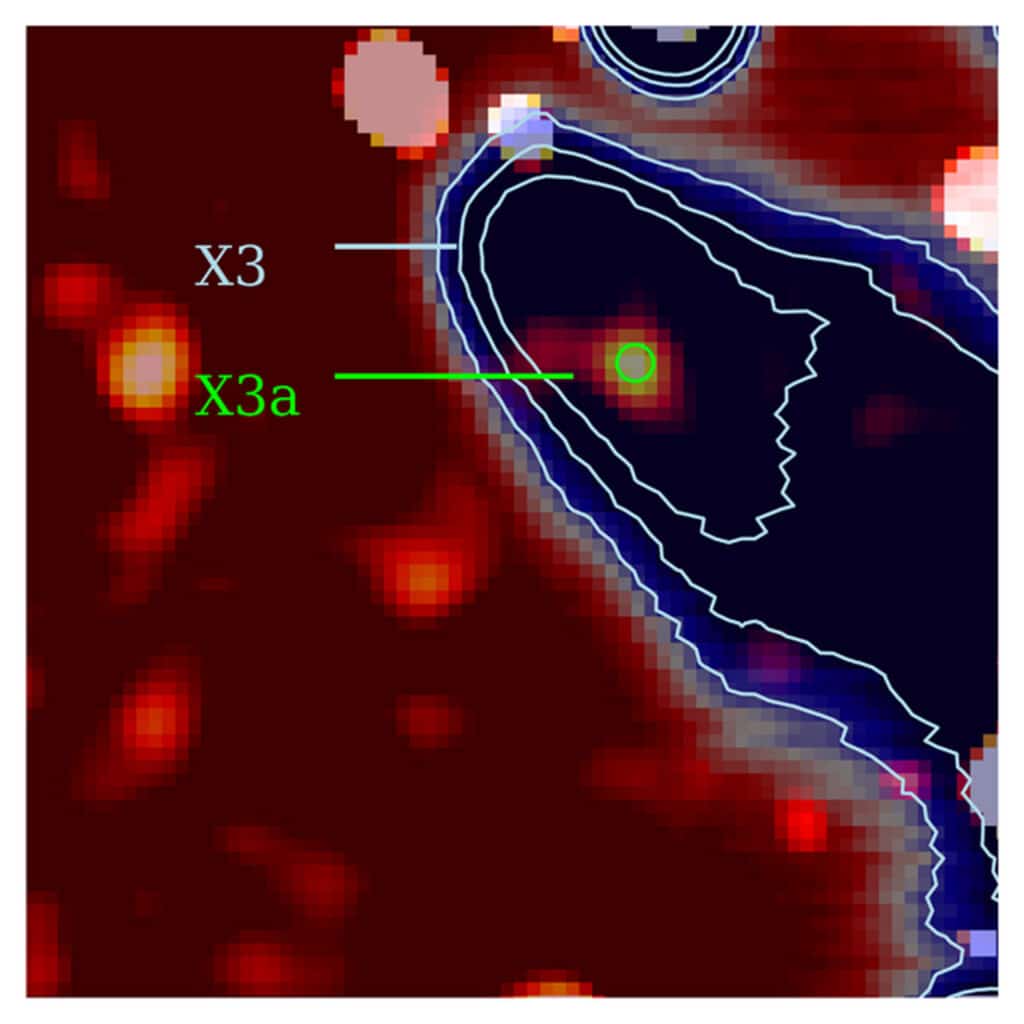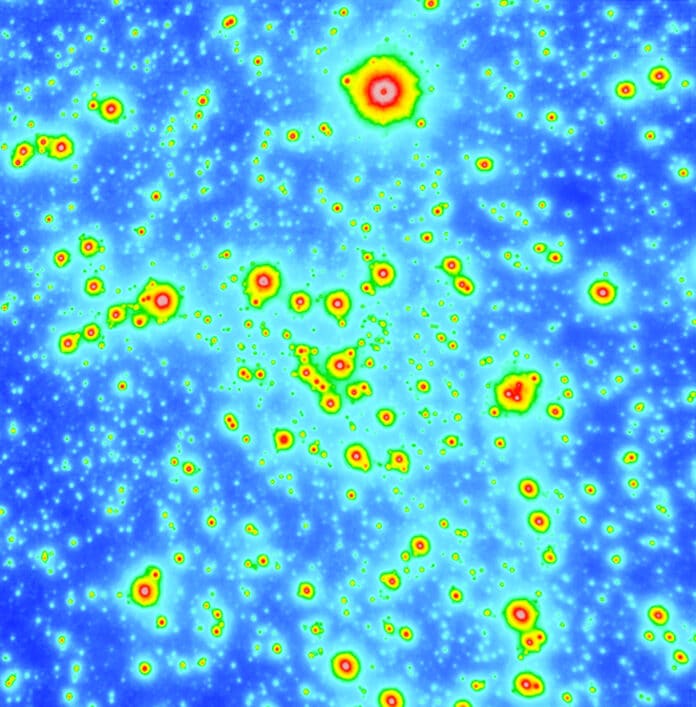An international team of researchers under the leadership of Dr. Florian Peißker at the University of Cologne‘s Institute of Astrophysics has discovered the heaviest and youngest infant star close to the black hole at the center of our Galaxy. The star is in its formation phase near the supermassive black hole Sagittarius A* (Sgr A*) at the center of our Milky Way.
The star is far younger than us—only tens of thousands of years old. The unique aspect of infant star X3a is that, according to theory, it shouldn’t be this near to the supermassive black hole in the first place. The team contends that it developed in a dust cloud orbiting the massive black hole and that it was only after it had already formed that it sunk to its present orbit.
Most people agree that the area around the black hole at the centre of our Galaxy is characterized by strong X-ray and UV radiation and very active processes. Precisely these conditions act against the formation of stars like our Sun. Hence, for a very long time, scientists had anticipated that only old, developed stars could settle by dynamical friction in the region of the supermassive black hole for billions of years.
However, quite surprisingly, already twenty years ago, very young stars were found near Sgr A*. It is still unclear how these stars got there or where they formed. The occurrence of very young stars close to the supermassive black hole has been referred to as “the paradox of youth.”
A gap between star formation and the newborn stars in close proximity to Sgr A* may now be closed by the baby star X3a, which is ten times bigger and fifteen times heavier than our Sun. To form in the immediate neighborhood of the black hole, X3a requires particular circumstances.

First author Dr. Florian Peißker explained: “It turns out that there is a region at a distance of a few light years from the black hole which fulfills the conditions for star formation. This region, a ring of gas and dust, is sufficiently cold and shielded against destructive radiation.”
Clouds with hundreds of solar masses can form in an environment with low temperatures and high density. Due to cloud-cloud collisions and scattering that take away the angular momentum, these clouds might theoretically move very quickly in the direction of the black hole.
In addition, highly hot clumps developed near the newborn star, which X3a may later accrete. Hence, these clusters might have also helped X3a acquire such a high mass in the first place. These clumps, however, only make up a small portion of X3a’s formation tale. Its “birth” is still not explained.
The scientists assume the following scenario to be possible: shielded from the gravitational influence of Sgr A* and intense radiation, a dense enough cloud could have formed in the outer gas and dust ring around the center of the Galaxy. This cloud had a mass of about one hundred suns and collapsed under its gravity to one or more protostars.
Peißker said, “This so-called fall time approximately corresponds to the age of X3a. . Observations have shown that many of these clouds can interact with each other. Therefore, a cloud likely falls towards the black hole from time to time.”
Dr. Michal Zajaček at Masaryk University in Brno (Czech Republic), a study co-author, clarified: “With its high mass of about ten times the Solar mass, X3a is a giant among stars, and these giants evolve very quickly towards maturity. We have been lucky to spot the massive star amid the comet-shaped circumstellar envelope. Subsequently, we identified key features associated with a young age, such as the compact circumstellar envelope rotating around it.”
The described method might also apply to galaxies with comparable dust and gas rings. Thus, many galaxies have very young stars in their center. This star formation model for our Galaxy as well as others, will be put to the test through planned observations with NASA’s James Webb Space Telescope or the European Southern Observatory’s Very Large Telescope in Chile.
Journal Reference:
- Florian Peißker, Michal Zajaček, et al. X3: A High-mass Young Stellar Object Close to the Supermassive Black Hole Sgr A*. The Astrophysical Journal. DOI 10.3847/1538-4357/aca977
